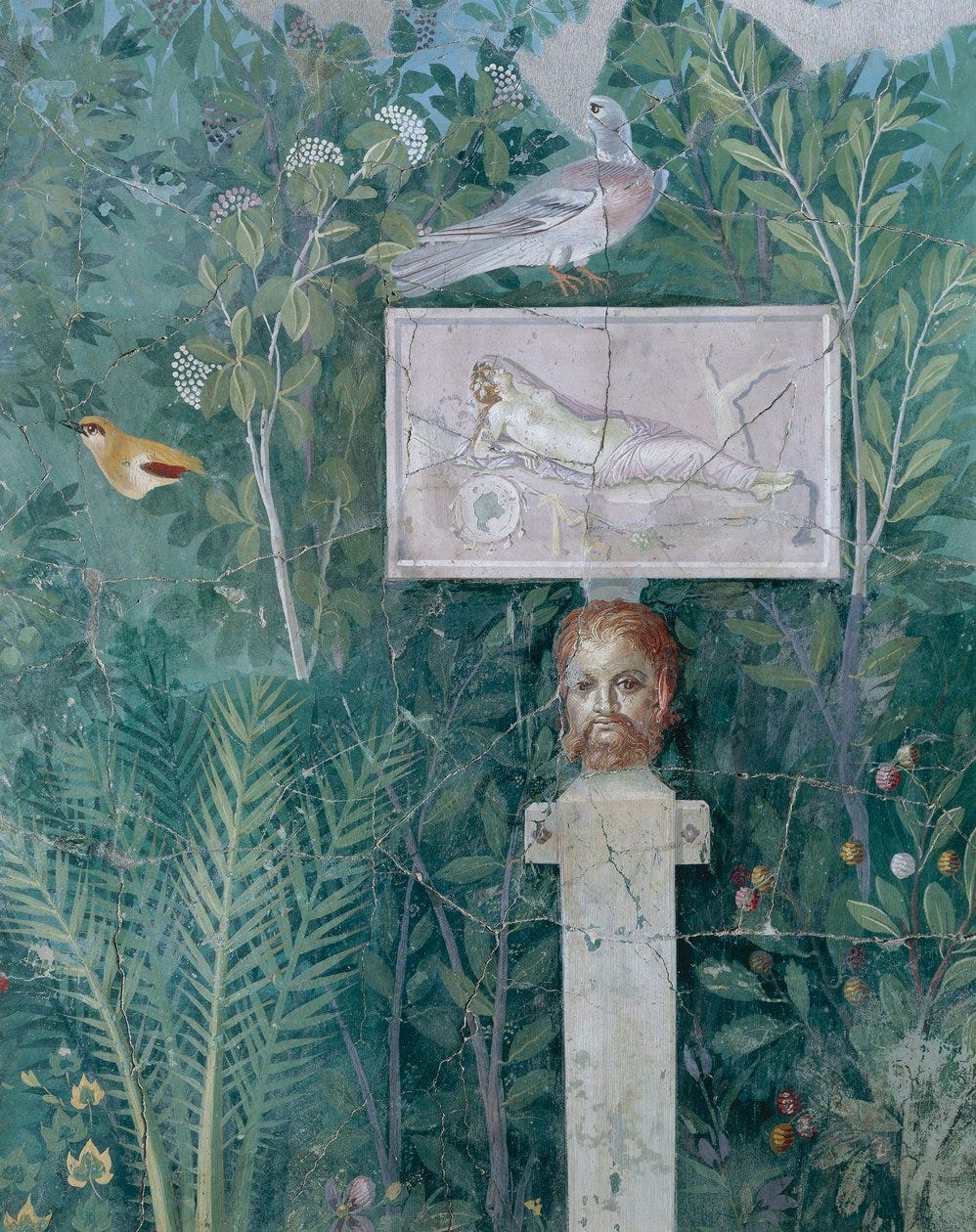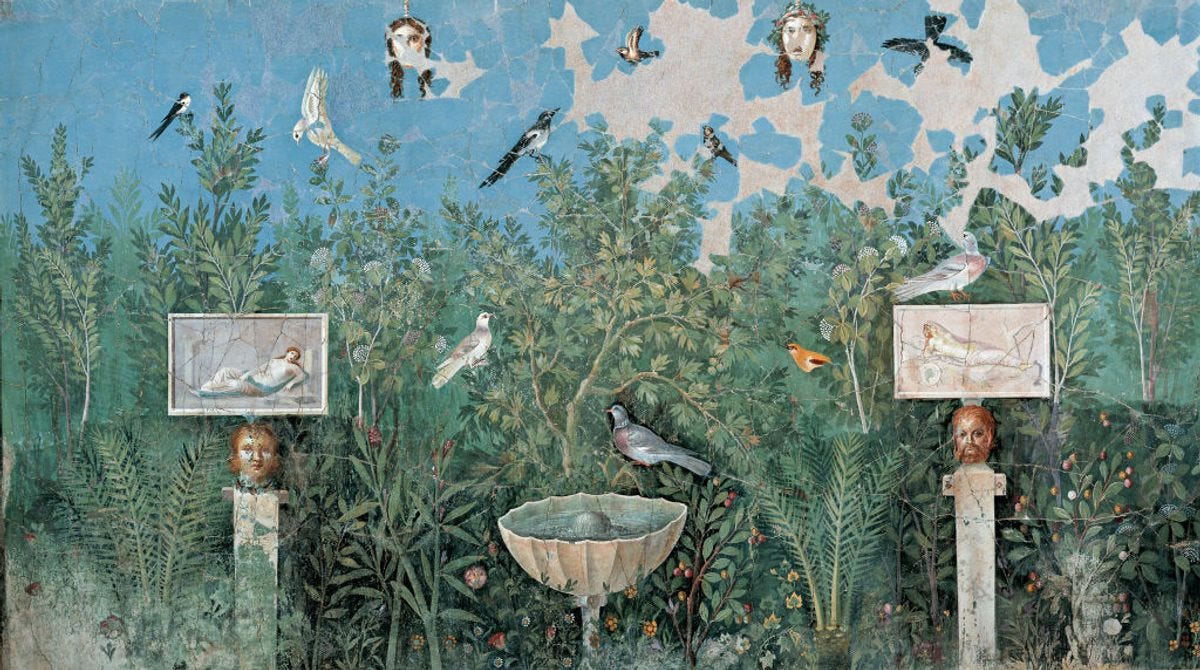The way we relate to our history tells us a lot about who we are. We see our past in black and white, but we have the urge to try to revitalize it to better understand how people lived, what they loved and how. We reinvent Shakespeare for contemporary audiences. We colorize old black-and-white photos. We digitally reconstruct ancient ruins to imagine them in their original glory.
In a lot of ways, this is a fool’s errand. We can only ever project onto the past from our present positioning, even if deeper knowledge refines our accuracy. We get better at it, but we can never recreate the lives of others.
I’m mesmerized by well-preserved historical artifacts, particularly frescoes from Pompeii, because they’re time capsules. They bring history to life in a way that allows for clearer projection.
The House of the Golden Bracelet is what I’m looking at today. It was a luxurious, three-story residence in Pompeii named after a one-pound golden bracelet found in its ruins. Buried under the ash of Mount Vesuvius until excavation in the 20th century, its frescoes depicted plants, animals, and cultural elements such as theater masks from the Roman Empire. The rich colors have faded, but over 2000 years later, they speak to us in a language we can understand.
For more information, here’s an excerpt taken from “Houses and Villas at Pompeii”:
The three-story House of the Golden Bracelet on the Vicolo del Farmacista was one of the most opulent in Pompeii.Jarrett A. Lobell wrote in Archaeology magazine: its walls covered with vibrant frescoes depicting theatrical scenes and imitating expensive marble paneling, its floors paved with intricate black-and-white geometric mosaics. At the rear of the house lay a verdant garden with a splashing fountain and quiet pools, its natural beauty echoed by wall paintings depicting oleander, viburnum, arbutus, bay, palm trees, irises, roses, daisies, and poppies, home to doves and house sparrows, a swallow, a golden oriole, and a jay. From the terrace was a view of the sea, whose breezes cooled the house during hot Mediterranean summers.
A wall painting from the House of the Golden Bracelet in Pompeii dating to the 1st-century B.C. or the 1st-century A.D. depicts a garden filled with dozens of local species of plants and birds, a birdbath, herms supporting plaques showing sleeping women, and theater masks.







